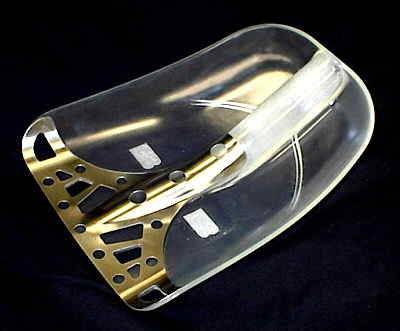 Many of these adventurers lack the training to deal with avalanches, which often occur in such regions, and the annual avalanche fatality rate has more than doubled over the last decade. According to Colorado Avalanche Information Center (CAIC) statistics 327 people died in avalanches in the United States between 1985 and 2001 and 19 avalanche fatalities occurred in the U.S. during the first two months of 2002 alone.
Many of these adventurers lack the training to deal with avalanches, which often occur in such regions, and the annual avalanche fatality rate has more than doubled over the last decade. According to Colorado Avalanche Information Center (CAIC) statistics 327 people died in avalanches in the United States between 1985 and 2001 and 19 avalanche fatalities occurred in the U.S. during the first two months of 2002 alone.
How can backcountry explorers guard themselves against becoming avalanche statistics? In its Avalanche Facts, CAIC says, “You can reliably avoid avalanches by recognizing and avoiding avalanche terrain,” adding that one “can minimize risk by using good technique.” Part of this good technique, it says, is carrying and knowing how to use avalanche rescue gear – “You should always have an avalanche transceiver (or beacon), shovel, and a collapsible or ski-pole probe” when venturing into uncharted, avalanche-prone territory.
G3 Genuine Guide Gear Inc. (G3), a company that primarily designs and fabricates backcountry ski equipment, is addressing these safety needs by developing a strong but lightweight avalanche shovel to complement its line of avalanche probes and other products. G3 engineer James Shaw aimed to design a brand-new shovel that balances the two main concerns of strength and weight and appeals aesthetically to consumers. He said, “Avalanche debris tends to be really cohesive – it’s chunky ice and not usually nice like powder snow,” so he initially considered an all-metal design to give the shovel adequate ice-cracking strength.
However, the aluminum used in most avalanche shovels tends to get damaged when hacking at debris, and the more durable metals like steel would produce a shovel too heavy to compete in the marketplace. Avalanche shovels weigh only around 1 pound on average to enable recreational backcountry skiers, ski guides, avalanche technicians and others traversing the challenging backcountry terrain to comfortably carry them on their packs.
 Shaw decided to develop a hybrid metal-and-plastic design scheme for the G3 shovel in order to address this strength-weight compromise and give the product a unique look. This one-of-a-kind construction required him to start from scratch, so he wanted design and analysis tools that could help him tackle the challenge. A SolidWorks CAD software user, Shaw chose ALGOR’s finite element analysis (FEA) software with InCAD technology because it could capture his exact SolidWorks geometry and analyze it to ensure the design and construction materials would endure forces that act upon avalanche shovels in the real world.
Shaw decided to develop a hybrid metal-and-plastic design scheme for the G3 shovel in order to address this strength-weight compromise and give the product a unique look. This one-of-a-kind construction required him to start from scratch, so he wanted design and analysis tools that could help him tackle the challenge. A SolidWorks CAD software user, Shaw chose ALGOR’s finite element analysis (FEA) software with InCAD technology because it could capture his exact SolidWorks geometry and analyze it to ensure the design and construction materials would endure forces that act upon avalanche shovels in the real world.
Using these tools, Shaw proceeded to create G3’s avalanche shovel prototype. ALGOR linear static stress analysis of his SolidWorks model showed where the design would require extra strength or experience excessive wear, which helped Shaw determine “the minimum amount of steel I need to make the shovel stronger and give it better chopping ability,” he said. For example, the middle section of the shovel experiences high stress from both the pry-bar type force on the handle and the impact force on the front edge. With plastic-only construction for this section, analysis showed that the shovel would basically flatten when attempting to pry through avalanche debris, so 304 stainless steel reinforces this area on the prototype. Lower-stress areas on the prototype are constructed of a clear, lightweight nylon or polycarbonate/polyester blend. Shaw said, “It has a really different look – the combination of metal and plastic really stands out.” He wanted to ensure that the product both performed well and looked good to attract backcountry skiing consumers concerned with both function and fashion. “This is something everybody needs to carry in the backcountry, so it’s nice to make a product that stands out.”
G3 AviMatrix Shovel prototype Engineer James Shaw designed the G3 AviMatrix Shovel prototype using SolidWorks CAD solid modeler (1) and ALGOR’s InCAD software technology (2 and 3). This technology provided seamless data exchange so Shaw could perform linear static stress analysis on his exact SolidWorks geometry without any file translation. Model courtesy of James Shaw, G3 Genuine Guide Gear Inc.
Shaw completed the basic design for the G3 AviMatrix Shovel early in 2002, but he continues to make minor adjustments to the model while it is still in pre-production. “Once I have a ballpark design, I like to see what happens when I make a change, and I can determine that very quickly with ALGOR,” he said. He added that he’s analyzing designs for improvements to G3’s backcountry telemark ski bindings and binding accessories for next season and hopes to add Mechanical Event Simulation capabilities in the future to perform true virtual prototyping and further optimize his product designs.
G3 Genuine Guide Gear
Solid Works
ALGOR








